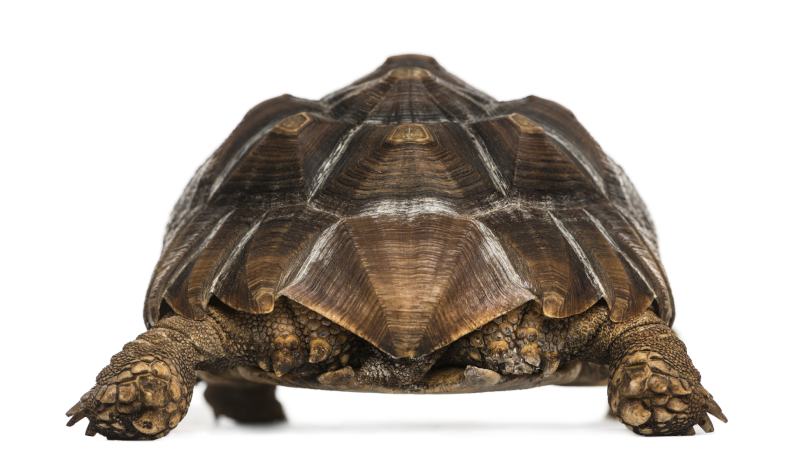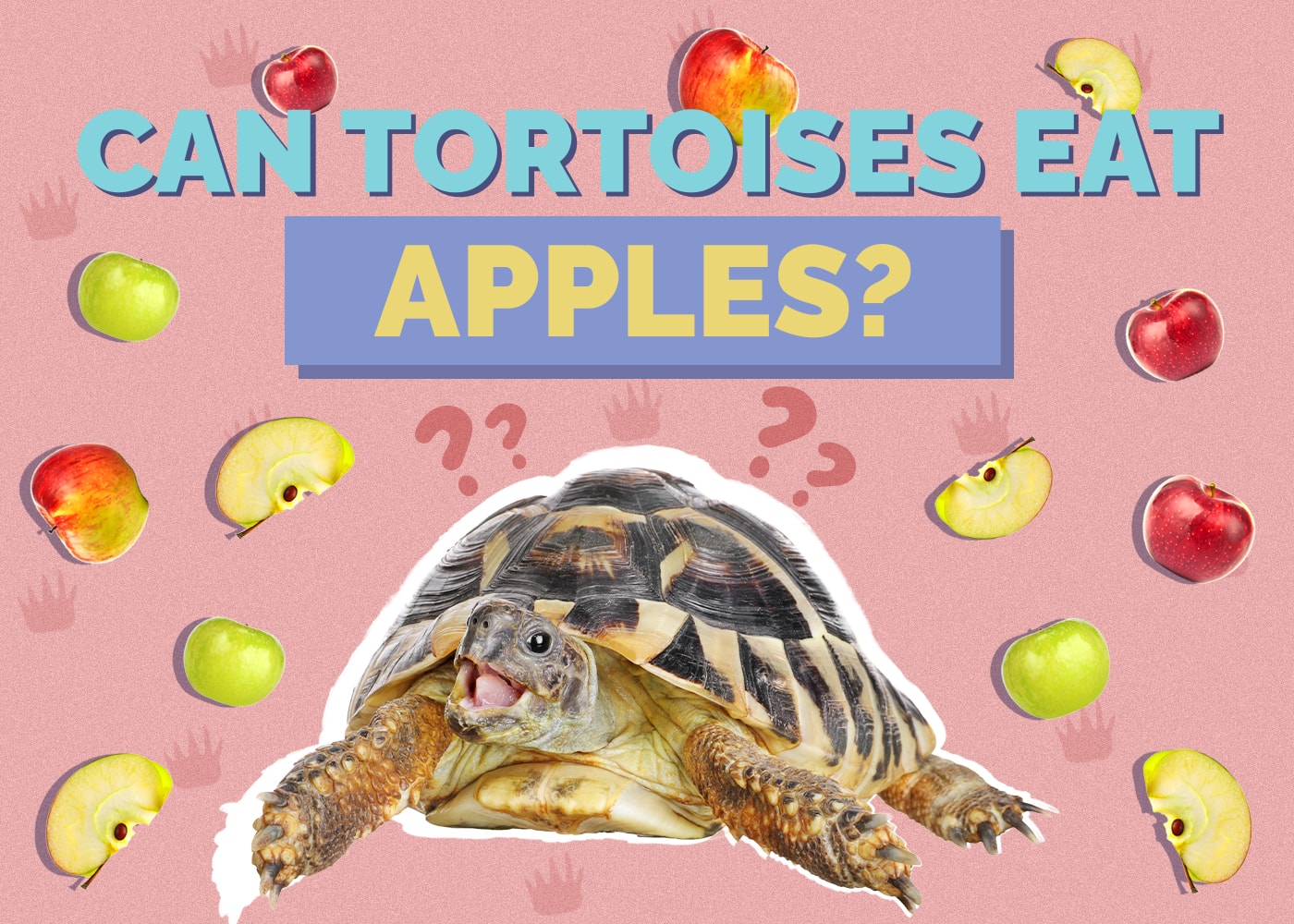Can Turtles Eat Tomatoes? Vet-Reviewed Nutrition Facts & FAQ

Updated on

Turtles are fascinating creatures known for their diverse diets, which typically consist of various plants, insects, and small aquatic animals.
If you’re a turtle owner or simply curious about their dietary preferences, you might be wondering whether turtles can eat tomatoes. In short, the answer is yes, turtles can eat tomatoes!
However, it’s important to understand the nutritional value, potential benefits, risks, and proper feeding methods associated with tomatoes in a turtle’s diet.
Are Tomatoes Healthy for Turtles?
Tomatoes can indeed contribute to a turtle’s overall health when offered in moderation. While they are not a staple food for turtles, tomatoes can be a nutritious addition to their diet.
It’s worth noting that different turtle species may have varying dietary requirements, so it’s always essential to consult your veterinarian for proper care guidelines regarding your particular turtle’s diet.
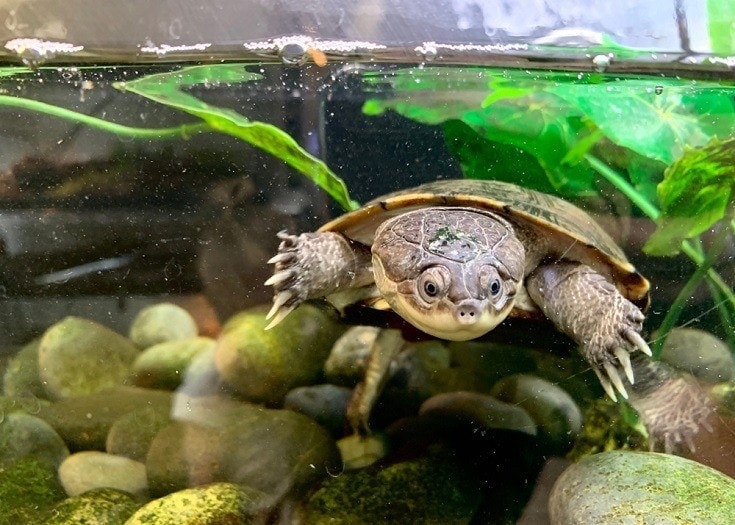
What Makes Tomatoes Healthy for Turtles?
Tomatoes are rich in several essential nutrients that can be beneficial to turtles. They contain a significant amount of vitamin C, which is essential for supporting the immune system and aiding its ability to fight off infections and diseases.
Tomatoes also provide vitamins A and K, as well as minerals like potassium and manganese. The presence of vitamin A in tomatoes is beneficial for maintaining good vision and eye health in turtles. The combination of calcium, vitamin K, and manganese found in tomatoes supports the development and maintenance of strong bones in turtles.
Tomatoes also contain antioxidants, such as lycopene, which can help protect the turtle’s cells from damage caused by harmful free radicals.
These nutrients play crucial roles in maintaining healthy bones, promoting proper organ function, and supporting the turtle’s overall health and well-being!
Do Turtles Like Eating Tomatoes?
Like humans, the taste preferences of turtles can vary. While some turtles may readily consume tomatoes, others may not show as much interest. However, it’s worth offering tomatoes to your turtle to see if it develops a liking for them.
You can experiment with different methods of serving, such as slicing or dicing the tomatoes, to make them more appealing.

Are There Any Risks of Feeding Tomatoes to Turtles?
While tomatoes can provide nutritional benefits, there are a few risks associated with feeding them to turtles. Tomatoes have a higher sugar content compared to other fruits and vegetables, so feeding them in excess can cause obesity and other potential sugar-related complications.
Tomatoes also belong to the nightshade family of plants, which contains certain compounds that can be harmful when consumed in excessive amounts. One such compound is solanine, which is present in the green parts of the tomato plant, including the stems and leaves. To mitigate this risk, it’s important to feed turtles only the ripe red fruit portion of the tomato and avoid the green parts entirely.
How Can I Properly Feed Tomatoes to my Turtle?
To safely incorporate tomatoes into a turtle’s diet, it’s crucial to follow some guidelines:
- Choose Ripe Tomatoes: Only offer fully ripe, red tomatoes to your turtle. Unripe or green tomatoes can contain higher levels of solanine and should be avoided.
- Wash Thoroughly: Prior to serving tomatoes, make sure to wash them thoroughly to remove any potential pesticides or contaminants.
- Cut Into Appropriate Sizes: Slice or dice the tomatoes into bite-sized pieces that are easy for your turtle to eat and swallow. This can also reduce the risk of choking for your turtle.

How Much Tomato Should I Feed My Turtle?
While tomatoes can be a part of a turtle’s diet, they should not comprise the majority of their meals. As with any dietary addition, moderation is key. A general guideline is to offer tomatoes as a treat or supplement, making up around 10% of the turtle’s overall diet. This means that tomatoes should be provided occasionally rather than being a daily staple.
The exact quantity of tomatoes will depend on the size and species of your turtle. As a starting point, you can offer a small portion, such as a few slices or cubes, and observe how your turtle responds.
If they eagerly consume the tomatoes without any digestive issues, you can continue to include them in their diet, adjusting the quantity as needed!
It’s important to remember that turtles require a balanced and varied diet to meet their nutritional needs fully. Tomatoes should be complemented with other suitable foods to ensure a well-rounded diet for your turtle. When in doubt, consult with your veterinarian for proper dietary recommendations!
What Else Can Turtles Eat?
Turtles benefit from a diverse range of vegetables in their diet. Aside from tomatoes, here are a few other healthy foods that you can feed to your turtle!
- Leafy Greens
- Carrots
- Squash
- Bell Peppers
- Cucumbers
- Zucchini
Remember to research the specific dietary requirements of your turtle’s species, as some turtles have unique preferences and restrictions when it comes to vegetables.
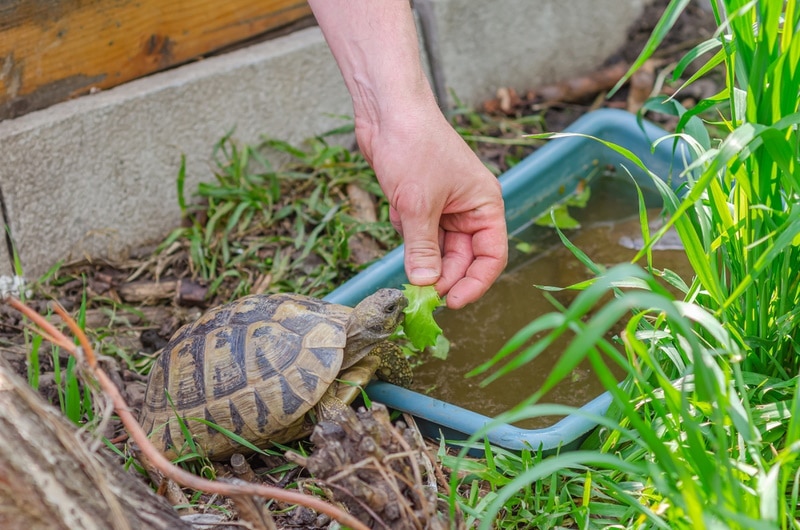
Turtle Diet Explained
Turtles have specific nutritional requirements to support their growth, health, and overall well-being. These requirements may vary depending on the species, age, and size of the turtle.
Turtles need a source of high-quality protein for proper shell and tissue development. This can be fulfilled through commercially available turtle pellets, feeder fish, insects (such as crickets or mealworms), or even cooked lean meats like chicken or turkey.
Fiber aids in digestion and promotes gut health. Vegetables like lettuce, kale, and dandelion greens are excellent sources of dietary fiber for turtles.
It’s important to note that turtles are ectothermic, meaning their body temperature is influenced by their environment. Their metabolism slows down in colder temperatures, requiring them to consume less food. Adjusting their feeding schedule accordingly is essential to maintain a healthy balance.
As a turtle parent, remember that providing a diverse and balanced diet is crucial to meeting the nutritional needs of your turtles. Incorporating a mix of protein, vegetables, and occasional fruits ensures they receive a range of vitamins, minerals, and other essential nutrients!
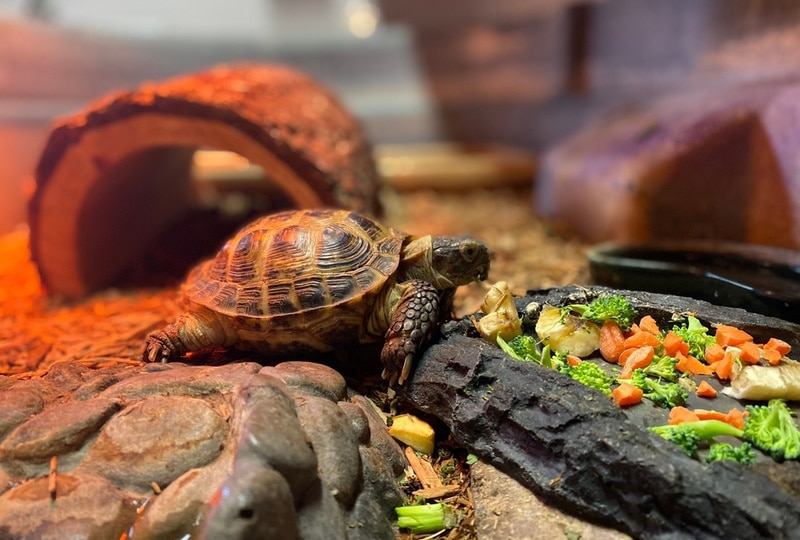
Final Thoughts
In conclusion, turtles can safely eat tomatoes, but they should be offered in moderation as part of a well-rounded diet. Tomatoes can provide valuable nutrients and benefits, including antioxidants, immune system support, eye health promotion, and bone strength.
By understanding the benefits, risks, and proper feeding methods associated with tomatoes, you can incorporate them responsibly into your turtle’s diet. Remember to prioritize a diverse range of vegetables, leafy greens, and appropriate protein sources to create a nutritionally balanced and enjoyable diet for your beloved turtle companion!
Featured Image Credit: Milton Buzon, Shutterstock



